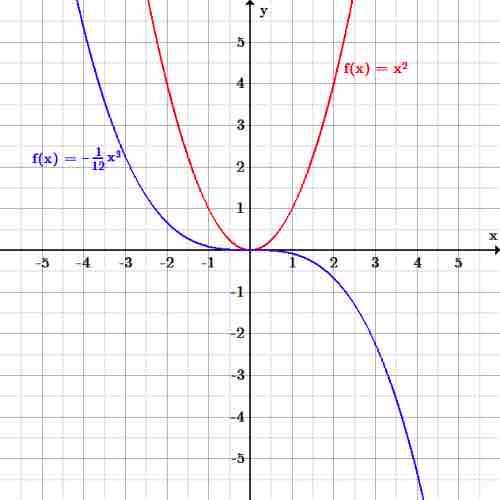Review of Domain, Range, and Functions
As stated in a previous section, the domain of a function is the set of 'input' values
The range of a function is the set of results, solutions, or 'output' values
In taking both domain and range into account, a function is any mathematical formula that produces one and only one result for each input. Hence, every given domain value has one and only one range value as a result, but not necessarily vice versa. In other words, two different values of
Determining Domain and Range
The domain and range can be visualized using a graph, such as the graph for
Example 1: Determine the domain and range of each graph pictured below:
Both graphs include all real numbers
If we now look at the possible outputs or

Domain and range graph
The graph of
Example 2: Determine the domain and range of each graph pictured below:

Domain and range graph
The blue graph is the trigonometric function